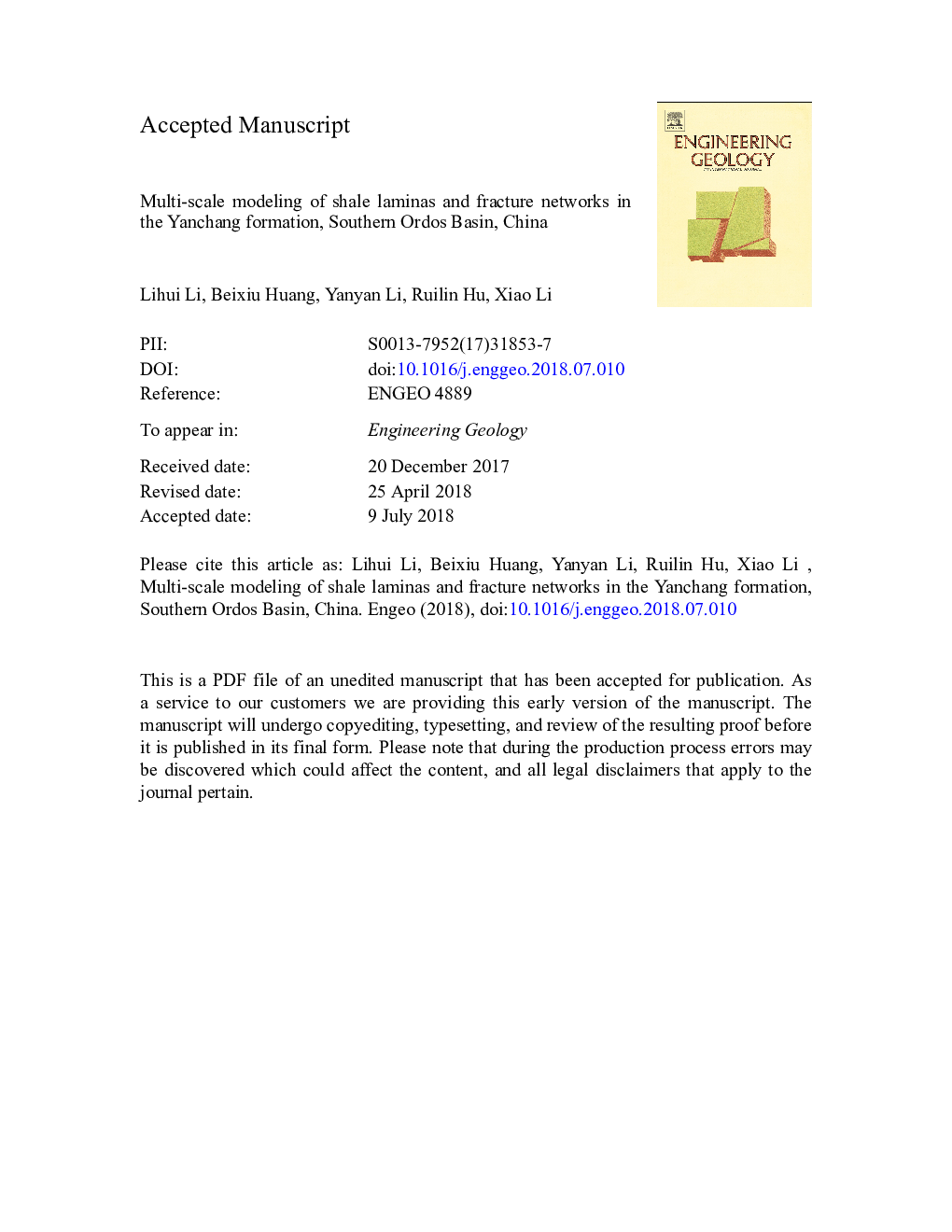| Article ID | Journal | Published Year | Pages | File Type |
|---|---|---|---|---|
| 8915810 | Engineering Geology | 2018 | 20 Pages |
Abstract
Outcrops and core observations show that sandy and tuffaceous laminas and natural fractures are well developed in the continental shale gas reservoir. This study reports the distribution of laminas and natural fracture networks at different scales, in cases of outcrops, wells and cores from Yanchang Formation, southern Ordos Basin. Firstly, based on two-dimensional fracture field investigations, a 3-D joint network model of the study area was built using the Monte Carlo simulation method. Then the laminations were identified from macroscopic scales to microscopic scales with multiple probe techniques. Statistical analysis of multi-scale layer thickness suggested that the average thickness of layers at multiple scales showed a fractal feature, and that the layer thickness at each scale followed with an exponential probability distribution, whose exponential coefficient was â3.38, â1.91, â1.65, â1.21, corresponding to meter scale, decimeter scale, centimeter scale and millimeter scale respectively. The fitting curves indicated that the majority of laminas at each scale were relatively thin, and the thicker the layer, the less the number of layers contained in shale. Finally, the lamination models were constructed and superposed over the joint network model to generate 3-D geological structure models at various scales. The models were validated by reproducing fracture and lamina parameters fairly close to those obtained from realistic geological bodies in the study area. The findings of this work could provide a more reliable geological model for the numerical simulation and physical model test of hydraulic fracturing in shale gas reservoir.
Related Topics
Physical Sciences and Engineering
Earth and Planetary Sciences
Geotechnical Engineering and Engineering Geology
Authors
Lihui Li, Beixiu Huang, Yanyan Li, Ruilin Hu, Xiao Li,
